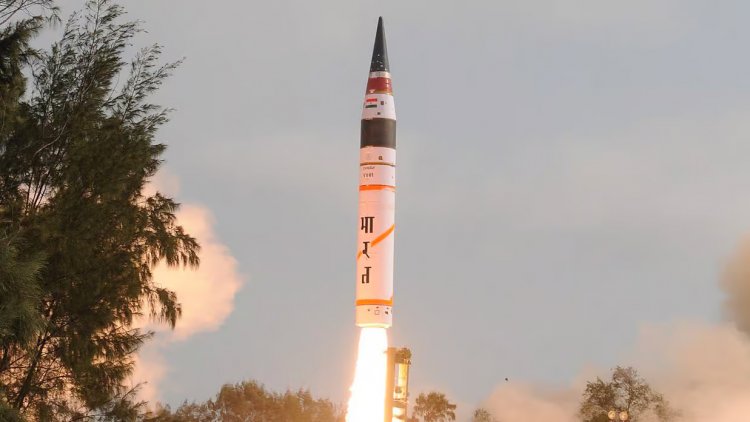‘No First Use’ Nuclear Policy: MIRV Tech Impact
STORIES, ANALYSES, EXPERT VIEWS

India has achieved two major milestones in modernising its nuclear weapons arsenal, writes Lt Gen Prakash Menon retd. (Director, Strategic Studies Programme, Takshashila Institution; former military adviser, National Security Council Secretariat). “First, the entry of MIRV technology in March, followed by the successful user trial of Agni-Prime ballistic missile on 3 April with a range of 1,000-2,000 km. The MIRV, or Multiple Independently Targetable Reentry Vehicle technology, tests have raised concerns about a potential nuclear arms race between India, China, and Pakistan and whether it would amplify similar concerns at the global level involving other nuclear weapon powers."
A report of the Federation of American Scientists (FAS) has also expressed concern over the proliferation of MIRV capability as a ‘sign of a larger worrisome trend in worldwide nuclear arsenals that is already showing signs of an emerging nuclear arms race with more destabilising MIRVed missiles’.
Impact of No First Use policy
India is immediately concerned with threat from Pakistan and China, more so with the latter.
Both India and China, writes Menon “continue to remain the only two powers that have a No First Use (NFU) policy. Even with the rapid increase in warhead numbers through induction of MIRVs on their delivery systems, neither country needs to fear a surprise first strike. China could fear a disarming first strike from the US because of disparity in numbers, but the US need not. With the US attempting to bolster its BMD capability, China would be tempted to increase its BMD penetration capability by MIRVs as also by advanced delivery systems like Hyper Glide Vehicles (HGVs). Similarly, India would do the same with respect to China and Pakistan. But with India and China being NFU powers, relatively speaking, credibility in terms of survivability and retaliation is strengthened and stability is not weakened as the FAS report predicts.”
For an NFU power like India, “MIRVs on the SLBMs would provide the best means of strengthening nuclear deterrence. India’s future SSBNs must therefore be equipped with MIRVed missiles. However, this directional thrust must not result in unnecessarily boosting India’s warhead numbers. There should not be a shift from the doctrinal conception that nuclear weapons are political weapons and therefore the normative military logic of bean counting is inapplicable. Instead, even the possibility of a couple of nuclear weapons impacting the major cities of its potential adversaries is believed to be sufficient for deterrence to prevail.”
India has managed to keep ‘military think’ at a distance
To the military mind, writes Menon “the idea of planning to get hit first and then react is anathema to its enculturation about use of force. If such ‘Military Think’ captures the mind of India’s political decision makers, India would only be pursuing an illusion that is unlikely to pay any dividends.
“Thus far, India’s belief systems on nuclear weapons, as expressed in its nuclear doctrine, have managed to keep ‘military think’ at a distance, unlike in the West. It should remain so even as the political leadership of others succumb to ‘military think’, as is being witnessed in the case of most nuclear powers.”
















